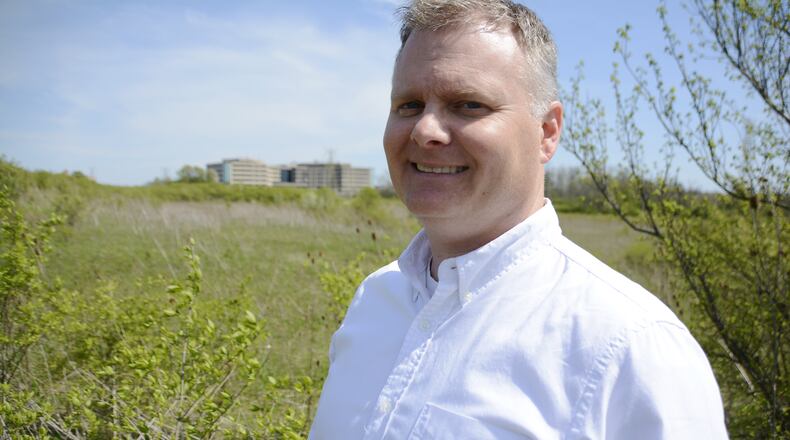The aggressiveness in the city’s economic development efforts is a direct response to the community’s input for the Fairfield Forward Comprehensive Plan, which was approved by City Council last year, said Development Services Director Greg Kathman.
“It’s a long-term plan,” he said. “I think the goal is that people will see older, less economically viable properties may be torn down or redeveloped in a way that sets it up for more attractive new development.”
The plan is needed because the city is aging, and the private market can only do so much, Kathman said. Projects like Aldi at Patterson Boulevard and Pleasant Avenue, and Raising Canes at Stadium Drive and Ohio 4, did not require much on the city’s part. However, there are some properties that may need the city to be involved , he said.
City Manager Mark Wendling said the future of Fairfield depends on the success of underperforming properties within the city.
“The viability of these properties ensures our ability to be able to maintain our infrastructure and services going forward," he said.
Fairfield dubbed itself the City of Opportunity in 1955, in part, because of the abundance of developable land. It attracted new development, roads and utilities and a growing labor force. Sixty-five years later, the undeveloped land stock is low as the city becomes a mature city. And its public works and utilities departments have established redevelopment strategies.
“We have some land sites available, but not a lot, either in our commercial corridors or in our industrial areas," Kathman said. "So how do we refresh, how do we renew, how do we stay a forward-looking community?”
Wendling said there are some areas along Ohio 4 that need the city’s focus, and the economic development strategic plan will help avoid revitalization.
“A lot of this strategy is to avoid even getting to that point,” he said. "We want to be proactive rather than reactive. We want to be ahead of the game.”
Fairfield is looking at four redevelopment goals, including removing blight, recruiting businesses and helping to create jobs. Officials also want to try to control strategic properties to be more involved in their future.
But redevelopment is tough and expensive, Kathman said, which is why his department is proposing an increase in the redevelopment fund, re-establishing the CIC and creating TIF districts.
“You have to dedicate sufficient resources," he said. "You can’t allocate just a small amount every year and expect to have a big impact.”
Ultimately, Kathman would like to see a $10 per-capita appropriation for the redevelopment fund, which can be supplemented by the TIF funds or state grants. Councilman Tim Abbott likes the plan and said some financial aspects could be added in parts because of recent budget constraints caused by the novel coronavirus pandemic.
“Economic development continues to move up the pecking order for our priority list,” he said. “You may not get your goal Year 1, but it gives us a target to work toward.”
Councilman Bill Woeste said “sustainability” is a word used a lot in government, but it’s an important word.
“This is a program we must, must go forward with in one way or another,” said Woeste, the development services council subcommittee chair. .”
The city will proceed with establishing the two TIF districts, including a public information meeting in late October, and possible legislation presented to City Council later this year.
About the Author

